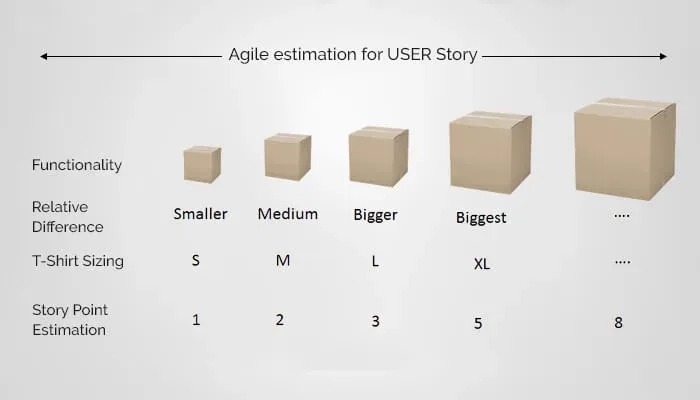
Are you someone who doesn't know what a Story Point is OR someone who wants to eliminate typical mistakes when it comes to Story Point Estimation OR someone who is not able to make a successful Story Point Estimation...
Then this guide on Story Points and Agile Estimation is all you need to know everything regarding the Agile Estimation and Story Points.
What Exactly is a Story Point?
First, we will start by knowing what exactly are Story Points and what is their function.
The term Story Point is defined as a metric that is used in the Agile Development and Management field to determine the difficulty level of implementing a particular story.
So, for a given business, the story needs to be initially assigned to the team of software development. With the estimations of story points, the development team doesn't have to be too precise with their schedule.
Sometimes it may be a little complex, let's say, in case of how long a particular feature will take to be completed developed, the development team will be assigning more story points to it. These extra story points will help in making the situation easy to understand.
There are some elements considered before assigning the story points to a situation, which are mentioned below:
- The complexity level of a particular story
- The potential amount of effort that is required to implement
- The total number of the unknown affecting and non-affecting factors

How are Story Points Expressed?
The story points can be expressed in two different ways, like:
- As the Numerical Range in terms of Fibonacci Sequence
- As the Size Range in terms of X-S, i.e. Extra Small or X-L, that stands for Extra Large.
Now, we know that a story point is a summarized symbolic measure that is required to estimate the time needed to implement a user story. In other words, it is a number that briefly informs the development team about the difficulty level of a particular story.
This level of difficulty is in regards to the complexities as well as the risks and efforts involved in the user story. The scaling or process to estimate story point can be described as - 1,2,3,5,8,13 [Fibonacci Series] and Extra Small, Small, Medium, Large [ T-Shirt Size Chart].
Sometimes it can be hard to estimate, especially for the team of developers. For software developers, Agile Estimation can be a difficult task to project accurately.
Let's take a look at some of the ways that can help in making this agile estimation as accurate as possible:
1. Team Involvement in Agile Estimation
Every single one of the team members should be involved when it comes to agile estimation. It is because each team member, like the designer, tester, developer, etc. has a different perspective of the product and requires a different amount of duration to deliver his/her part of a user story.
2. Coordinating With Product Manager
In the process of Agile Development, the product manager is the one with the completed list of the user story and its feature requirement with short descriptions attached to it.
Whenever an agile development process is started, the issues that the development team usually face are related to the requirements of the user stories. Here, the product manager can guide them through each requirement of a user story.
Choosing Story Points Over Hours
Earlier the project development teams would opt for the traditional method of providing their project estimation in the format of Hours, Days, Weeks, and even months. But now, the team of developers uses the Fibonacci sequence like 1,2,3,5,13 and so on for representing their agile estimation of the project.
Below are the top reasons why to use story points:
- The initial steps might require some effort, but once the team is familiar with the flow and each story point value. Then the process of story point assigning will become quicker.
- With the method of relative estimation, the emotional attachments from dates are eliminated.
- Every member of the team estimates work on a slightly varying level; this further means that their velocities will also be different.
- The format of dates does not note the account of the non-project related work, including discussion meetings, emails, and much more.
- With story points, the team members focus on the difficulty level of the problem and not on time spent, making it a more efficient option.
Although it may look complex still, using these story points can come very handy under challenging stages during the process of software development.

Mistakes to Avoid With Story Points
When dealing with Story Points, there are many things that you should know. These are some of the most common mistakes that are made when using these story points:
1. To Translate the Story Points Into Hours
If you are someone who translates the story points into hours, you just spoiled the whole point behind the speed of relative estimation. It is because it further provides you a false sense of accuracy, and then it becomes more and more challenging to reach the previously calculated agreement.
2. To Average Out the Story Points
For example, if the development team is divided into two parts and one half of the team wants to set the PBI at 3 points whereas the other half of the team wants 5 points to be set. It can be quickly resolved by setting the PBI at 4 points. But then the team should not again attempt to provide a false sense of accuracy with the difference between points.
The concept of Story Points in Agile Estimation is simple to apply, but it requires an appropriate amount of practice to master this technique. Our team of experts recommends implementing this method to the development teams to help them speed up their relative estimation.
Also, do not forget to hit on the 'Subscribe' button if you want to keep reading more about the latest Development tactics in the market.

Sr. Content Strategist
Meet Manish Chandra Srivastava, the Strategic Content Architect & Marketing Guru who turns brands into legends. Armed with a Masters in Mass Communication (2015-17), Manish has dazzled giants like Collegedunia, Embibe, and Archies. His work is spotlighted on Hackernoon, Gamasutra, and Elearning Industry.
Beyond the writer’s block, Manish is often found distracted by movies, video games, AI, and other such nerdy stuff. But the point remains, If you need your brand to shine, Manish is who you need.













